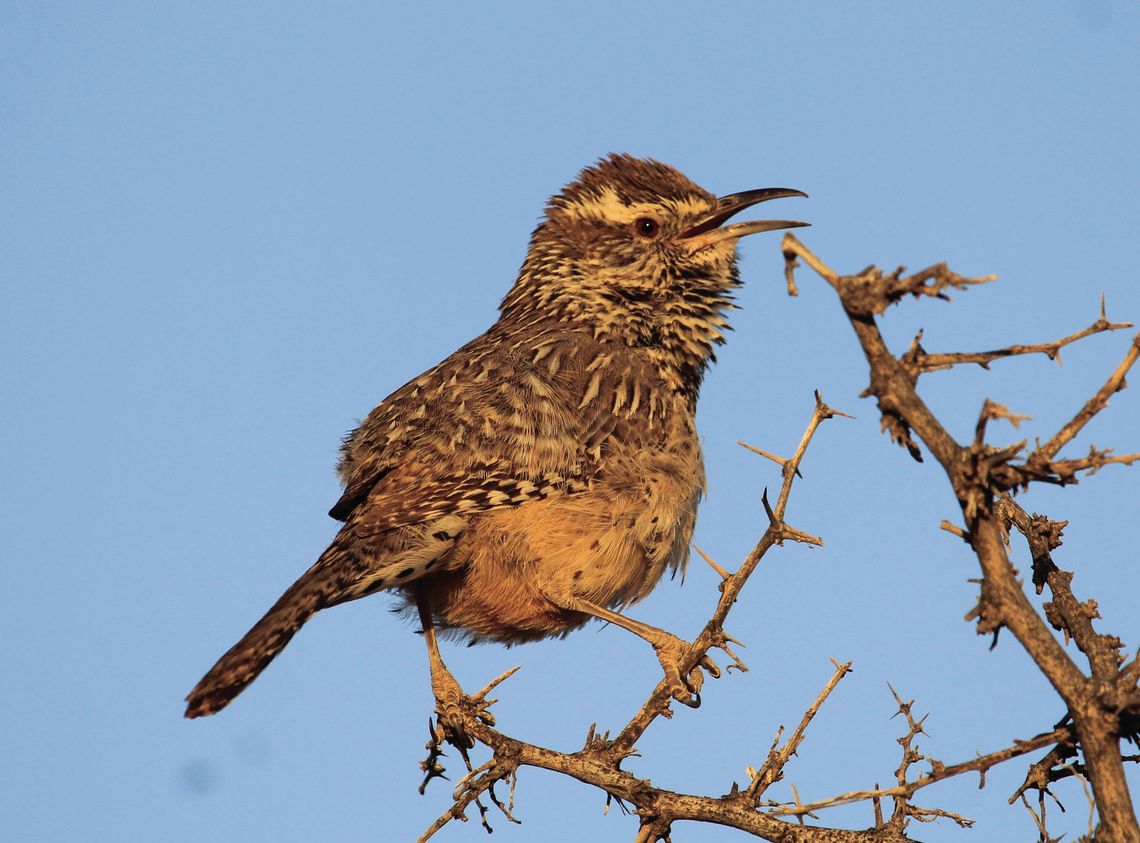Anyone who has heard the tale of the Three Little Pigs knows that the little pig who built his house on rock was the most successful at keeping away a certain canine predator. There just so happens to be a bird that resides in this great state that has taken that concept to a whole new level, and that species is the aptly named Cactus Wren.
The Cactus Wren (Campylorhynchus brunneicapillas) is one of nine species of wrens that call Texas home. Being a non-migratory bird, it can be observed on a regular basis throughout the southwestern and southern portions of the state (west of an imaginary line extending from Lubbock to Corpus Christi) throughout the year. It is in these regions that this large species of wren finds its preferred habitats; grasslands, semiarid pastureland and open desert.
The Cactus Wren is the largest species of Texas wren residents with adults attaining a body length of 8 ½ inches. The wingspan is proportionately larger at a length of nearly 11 inches across. From afar, the most noticeable coloration is the white stripe that extends from the back of the long, downward-curved bill over the eye to the back of the brown-capped head. Upon closer inspection, however, the overall rust-brown upperparts are exquisitely adorned with white and black streaks.
The underparts are tan to buff, and are marked with random black spotting, and there is a large black patch under the chin. The tail is long, and the underside has black-andwhite barring that is best seen when this bird is in flight. The flight pattern is straight, and the tail is either partially or fully spread while in flight.
This lively species, like most other wrens, has a largely carnivorous diet as it feeds upon a large variety animal material; primarily “bugs” such as beetles, flying insects, and spiders, although larger items such as small lizards and frogs may also be consumed. However, more so than other wren species, up to 20% of its diet also consists of fruits, particularly cactus tuna.
Although it will sporadically live in small groups of family members, it generally lives in pairs. These pairs are monogamous and will usually produce 2-3 broods annually. A solitary nester, it is where the nests are typically constructed that gives this wren species its common name. The preferred place for nest construction is within the safe confines of the Cholla cactus, and when that spiny plant species is unavailable, then the more common prickly pear cactus plant is utilized. The domed nest is constructed by the male, and is made up primarily of grasses, twigs, animal fur and feathers. There are 2-7 pink eggs speckled with brown spots that are laid in this enclosed nest. The female will incubate these eggs for about 2 weeks and then both parents will take care of the young for an additional 3 weeks until they can depart the nest. Once the young leave the nest it is frequently used by the adults for roosting and many pairs will recycle the same nest year after year.
Studies have shown that population densities are stable, although it may be susceptible to habitat fragmentation from suburban developments. Outside of Texas, this species can be observed in southern New Mexico, Arizona, and California. From there it can be seen in the western slopes of the Sierra Madre Occidental as well as the central plateau of Mexico. It is the state bird of Arizona.





















